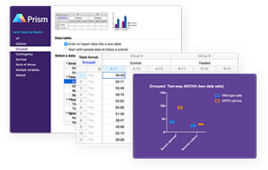My New Laptop Does Not Have Any RS232 Ports — What Should I Do??
Easy solutions for connecting to a USB port
 |
Although USB stands for “universal serial bus,” the USB interface does not work anything at all like a standard RS232 serial port. Like RS232 serial ports, the USB ports on a PC are designed for interfacing external devices. However, any piece of equipment that is designed to connect to a USB port must come with a Windows device driver that essentially informs the operating system when the device is connected to or disconnected from the PC.
The driver also provides a software interface to the peripheral hardware. This is basically a small software program that provides a standard interface to a particular external device. The result is that practically any device can be designed to connect to a USB port as long as the device is supplied with an appropriate driver.
The only problem with the USB interface design is that there is no way to simply open up a USB port and communicate with any device the same way that you can with a RS232 serial port. Any software that communicates with a particular piece of USB hardware must do this through the driver that is supplied with the hardware.
What if your peripheral device needs a RS232 serial port?
Many new laptop computers and some desktop models are now being shipped without RS232 serial ports and, instead, are equipped with USB ports. Fortunately, if you have a device that connects to a RS232 serial port, and you need to connect this device to a PC that does not have any RS232 serial ports, there are many solutions available that are both easy and inexpensive. A number of companies sell single port USB to RS232 converters as well as other multi port add-on serial adapters that connect to a PC through the USB port.
All of these converters and add-on adapters are supplied with a Windows device driver that gets installed on your PC. The device driver software causes the PC to treat the USB to RS232 converter as if it were an actual RS232 serial port installed on the motherboard of the computer. In order to accomplish this, the driver for the adapter creates a “virtual COM port” in Windows that behaves exactly like a physical COM port built into the motherboard.
Single port USB to RS232 converters are commonly available at most computer supply stores for under $30, and multi port add-on adapters also are widely available at reasonable prices. All of these products will work just fine with any Windows-based serial communications software.
Conversion is easy
Getting started is simple. All you need to do is to:
• purchase the USB to RS232 adapter
• install the driver that comes with it
• plug the adapter into a USB port on your PC
• and, finally, connect the RS232 device to the adapter.
The new serial port should be automatically recognized by Windows and assigned a COM port number (typically COM3 or COM4). Even though the new serial port is not built into the system, Windows will treat the port as if it were, and any standard serial communications software will be able to communicate through the port exactly the same way as if it were a built-in COM port.




